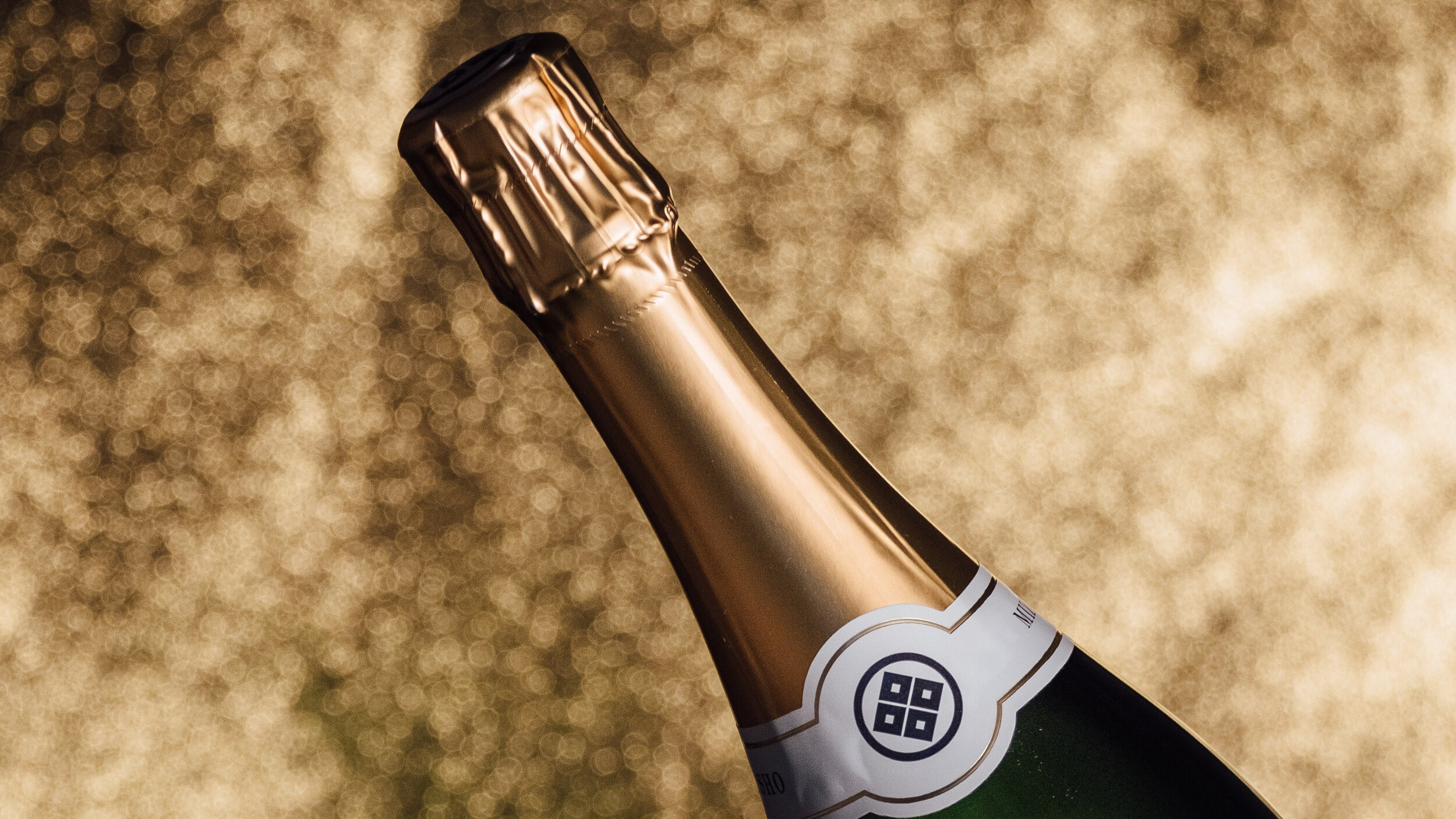Specialty Styles
We’ve covered the main styles of sake, but there are a few more to look at that, while maybe not as common, are worthy of attention.
Sparkling Sake
Sparkling sake is growing in popularity right now and many breweries are trying their hand at producing a sake alternative to Champagne and other sparkling wines. The dream of having an ‘All-Japanese Champagne’ to celebrate with at the upcoming Tokyo Olympics is one motor behind this trend. The others are fashion and demographics. There’s a general trend to lower-alcohol drinks and sparkling beverages have an elegant flair about them that’s especially appealing to urban Japanese women, who, with refined tastes and high purchasing power, are a main target group for sake.
Sparkling sake can be produced in different ways. The easiest is to simply add carbonation to a finished sake before bottling. But some breweries are going all the way and now produce sake with a method similar to champagne, where the fermentation continues under pressure in the bottle.
Sparkling sake can technically be of any grade, but ginjo and daiginjo with their fruity aromas are the most common.
Shichiken has recently emerged as one of the most innovative producers of champagne-style sparkling sake and produces a range of sparkling sakes, some of which have been barrel-aged.
Cloudy Sake (Nigori)
As a legal requirement, all sake has to be passed through some kind of filter. But the fineness of the filter isn’t strictly defined and so some brewers make an cloudy style of sake that is pressed through a wider mesh than usual and has some of the rice solids (and bits of yeast and koji) left in the bottle. Brewers can also chose to blend a roughly-filtered sake with clear sake and thus control the level of cloudiness.
These sakes can be just faintly cloudy or downright chunky and range in colour from almost pure white or to light yellow or even pink.
Cloudy sake can be made in any category, no matter the polishing ratio of the rice.
A famous example is the sparkling Tsukino Katsura Nigori from Kyoto brewery Masuda Tokubei.
Yamahai and Kimoto
To understand these two types, we need to get a little more technical. Usually, when the brewery workers prepare the yeast starter, they will add a small amount of lactic acid bacteria which inhibits the growth of other, unwanted bacteria and microorganisms that would negatively affect the fermentation and the flavour. If you bake your own sourdough bread at home, you might at one point have added some yoghurt to the sourdough starter at the beginning — the effect is the same. The bacteria create an acidic environment that doesn't affect the yeast but is hostile to most other bacteria.
In old times, this was not an option. People didn’t know about bacteria, much less the positive effect of lactic acid bacteria. But breweries had developed a technique that ensured a safe fermentation. They would pound the mixture of rice, koji, and water with long poles until it was a smooth puree and well mixed. This was hard work and very time-consuming too. Brewery workers would sing songs to keep an even rhythm and pace and to keep track of the time. But it helped to speed up the natural development of lactic acid by the yeast. Sake labelled with the term ‘Kimoto [生酛]’ (lit. “living (yeast-)starter”) will have been produced with this technique.
A bottle of Kimoto sake.
Then, in the early 1900s, it was discovered that all the hard work isn’t even necessary. If one just lets the starter sit by itself with a bit more water and at a slightly higher temperature than what had been used before, the magic will happen by itself. This is called the Yamahai-method [山廃]. It also takes much longer than the modern process (up to one month!) and is quite risky, as there is a long window when acidity levels aren’t quite high enough and wild yeasts and bacteria can grow and ruin a whole batch. Cleanliness is extremely important.
Both these techniques are more commonly used in the production of junmai as they result in higher umami, pronounced acidity and a fuller body. The bacteria and wild yeasts add a bit of funkiness that can be very appealing and add to the sake’s character and complexity.
Daishichi is an outstanding example of a Kimoto sake and the brewery takes great pride in keeping the old traditions alive.
Kijoshu
“Sake goes Sauternes” could be the marketing line for this luxurious specialty style of sake with its golden colour and desert-wine sweetness.
Normally, brewers add a mixture of water, yeast-starter and koji to the fermenting mash three times. For kijoshu, the water in the last addition is replaced with sake. This raises the alcohol content, which in turn causes the fermentation to stop earlier, before all sugar has been converted. The resulting sweet sake is then aged for a few years before release.
Kijoshu is both old and new. It was created in the 1970s as a luxurious Japanese alternative to European wines, but researchers discovered that the same method had been used hundreds of years ago to make special sake for the Imperial household.
More about Kijoushu in our recent article.
Taruzazke
Taruzake is sake that has been stored in wooden barrels (taru). Already after a few days, the cedar wood imparts a characteristic woody note on the sake. Taruzake is associated with festive occasions like weddings, where the couple will serve their guests with sake directly from the barrel, which they have opened together in a lid-breaking ceremony, but is also available in bottles.
If you have been to Japan, you will have seen impressive rows of barrels lined up at Shinto shrines. It’s a sight that can make you thirsty for some sake – but, alas, these barrels are empty and just for decoration.
(Empty) sake barrels at a shinto shrine.
Doburoku
Doburoku is sake that is completely unfiltered, i.e. not separated from the lees. Therefore, it’s—legally speaking—not sake (because Japanese Sake has to be filtered).
Back in the day, many families would have made their own, simple sake this way. But now homebrewing of any kind is illegal in Japan and “real” brewing licences require a relatively large production volume. Doburoku production is allowed in a few areas, but only for local consumption. A few breweries have special licenses and sell bottled doburoku and if you’re lucky you might come across a bar that is allowed to make and sell their own doburoku. Nihonshu Hotaru in Chiyoda, Tokyo is one of those places.












